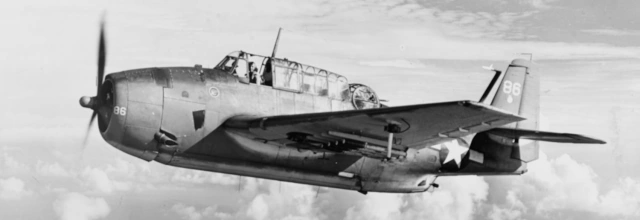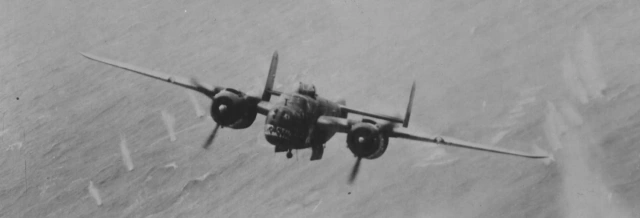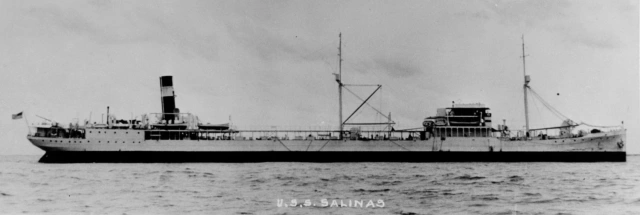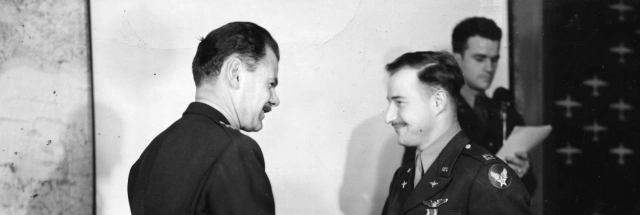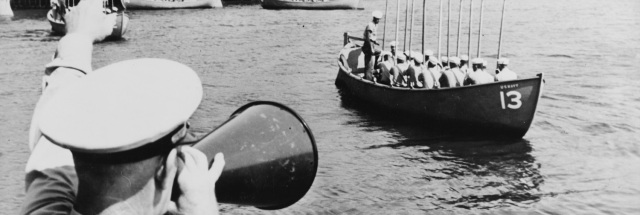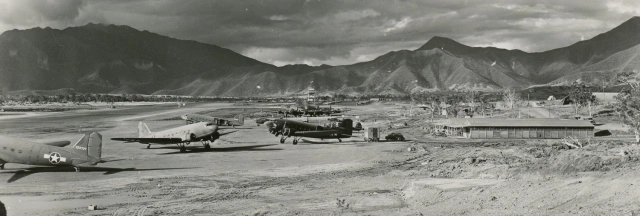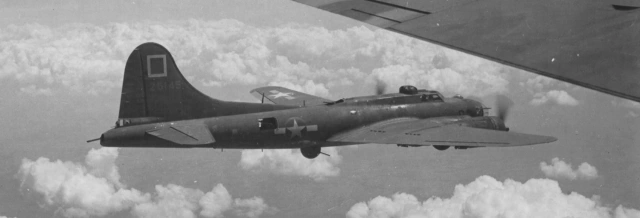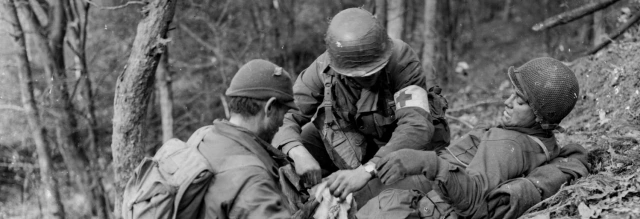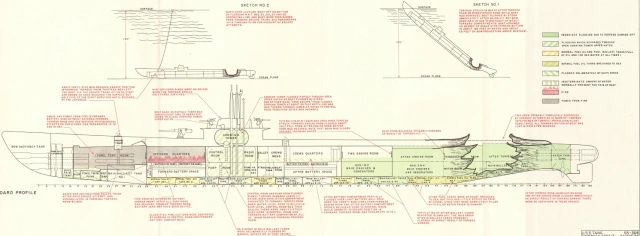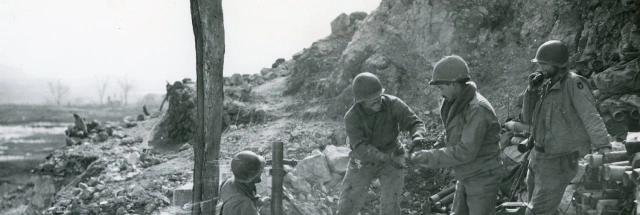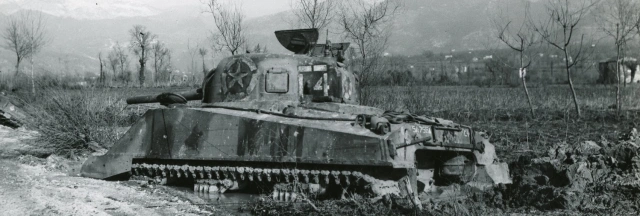| Home State | Civilian Occupation |
| Delaware | Plumber and pipefitter |
| Branch | Service Number |
| U.S. Army | 32367535 |
| Theater | Unit |
| Mediterranean | 1986th Engineer Composite Platoon |
| Awards | Military Occupational Specialty (Presumed) |
| Soldier’s Medal | 383 (fire fighter or pump operator) |
Early Life & Family
Clayton Jones was born at 219 (North) Monroe Street in Wilmington, Delaware, just after noon on September 30, 1917. He was the fifth child of Sumner Jones (a laborer, 1882–1943) and Amanda P. Jones (née White, 1892–1958). Jones had at least 14 siblings, several of whom died very young. Two older siblings died as infants before Clayton’s birth, and at least four of his younger siblings also died as infants.
The Jones family was recorded on the census on January 1 or 2, 1920, living at 219 Monroe Street, a home owned by Jones’s paternal grandmother, Annie Jones. He shared the home with her, his parents, an older sister, an older brother, and three others. At the time, his father was recorded as a builder at a shipyard.
Jones was recorded again on the next census on April 12, 1930. At the time, he was living at a home on Central Avenue near 3rd Street in Holloway Terrace. He shared the home with his parents, his older sister, his older brother, four younger brothers, a younger sister, and a boarder. His father was now working for an upholster company.
When he registered for the draft on October 16, 1940, Jones was living at 3 East Front Street in Wilmington with Eva May Pernot, who was listed as his common law wife. He was listed as working for Theodore Jones at 117 Market Street in Wilmington. The registrar described Jones as standing about five feet, six inches tall and weighing 148 lbs., with brown hair and eyes. Alterations to his draft card indicate that prior to entering the service, Jones moved to 616 King Street and changed employers to Michael Dilucchio at 225 West 8th Street in Wilmington. The move to King Street apparently followed his marriage to Catherine M. Chandler on January 12, 1942, in Elkton, Maryland.
According to his widow’s statement to the State of Delaware Public Archives Commission and his enlistment data card, Jones worked as a plumber and pipefitter prior to entering the service. His enlistment data card stated that he had a grammar school education. Journal-Every Evening stated that Jones “attended No. 4 School and Minquadale School, and was employed by Pusey and Jones Corporation before his induction.”
Military Career
Jones was drafted and inducted into the U.S. Army in Camden, New Jersey, on October 22, 1942. His widow’s statement indicates that Jones went on active duty at Fort Dix, New Jersey, on November 5 or 6, 1942. Journal-Every Evening reported that he went overseas in June 1943. Similarly, the Wilmington Morning News stated that Jones was stationed in North Africa when his father died at Wilmington General Hospital on July 28, 1943.
By April 1944, Jones had been promoted to technician 5th grade and was a member of the 1986th Engineer Composite Platoon. His unit had been activated on April 9, 1943, at Bradley Field, Connecticut, as the 1986th Engineer Fire Fighting Platoon (Aviation). A total of 30 men (one officer and 29 enlisted) transferred into the unit by the end of its training period on May 5, 1943. The platoon staged at Camp Shanks, New York, from May 25–June 9, 1943, shipping out from the New York Port of Embarkation on June 10, 1943. Based on that date, it is likely the Jones was already a member of the unit.
The 1986th arrived at Oran, Algeria, on June 21, 1943, and was initially stationed at nearby La Sénia Airfield. Several weeks later, the unit was ordered west to perform firefighting duties at Salé Air Base, Morocco, arriving there on July 12, 1943.
Tragedy struck the 1986th Engineer Fire Fighting Platoon during its next move (to La Marsa, Tunisia) in September 1943 when one man was killed and another injured in a vehicle collision. A move to Oudna, Tunisia, followed. The platoon arrived in Italy on December 23, 1943, aboard the U.S.S. LST-379 and was assigned to support the U.S. Fifteenth Air Force at fields located on the heel of the Italian boot.
Effective January 1, 1944, the unit was reorganized as the 1986th Engineer Composite Platoon. The platoon’s 27 men were divided into three detachments stationed at different fields: Headquarters Detachment at San Pancrazio, 1st Detachment at Manduria, and 2nd Detachment at Lecce. All three detachments were equipped with Ford Class 135 crash trucks.
In addition to fire suppression duties (both structural and aircraft), the platoon was responsible for sounding the alarm in the event of an enemy air raid by using their vehicles’ sirens. They also performed miscellaneous duties, such as drafting water for construction or in the event of broken water pipes.
Technician 5th Grade Jones was a member of 1st Detachment (also referred to as 1st Section) by April 1944. Records are limited prior to January 1, 1944, but the platoon war diary recorded the detachment’s activities in detail during the last months of his life. 1st Detachment responded to a tent fire and a barracks fire on January 3, 1944, and a minor fire at officers’ barracks the following day. They handled another tent fire on January 14, 1944. In the war diary, the platoon commanding officer, 1st Lieutenant William R. Fox, remarked sardonically: “The men are beginning to take these tent fires as an every day occur[r]ence.” He explained in his entry on the 20th that “Overheated stoves or leaking fuel lines were being the cause of most of these tent fires.”


On January 17, 1944, the 1st Detachment handled a photography lab fire. The next few weeks were quiet, though on February 10, 1944, the detachment extinguished a fire resulting from the crash of a B-24 bomber and another at barracks. One week later, they handled a small fire in a barracks trash can.
1st Detachment handled a tent fire on March 2, 1944. Two days later, the detachment responded when a B-24 crashed and exploded on takeoff. The detachment handled an unspecified alarm (“alarm” being shorthand for all fire runs) on March 16, a plane crash and oil drum explosion on March 17, and four calls on March 18: A plane crash landing, a mess hall fire, a gas drum explosion, and an investigation for what turned out to be a smoke bomb.

April 1944 started off quiet for 1st Detachment. On April 2, they responded when a B-24 blew a tire and went off the runway but did not crash, and for a similar incident three days later. The war diary recorded that 1st Detachment had a close call on April 6, 1944:
One B-24 failed to take off and crashed at the end of the runway. The plane and bombs both exploded, instantly killing the nine members of the ship’s crew. Our men upon responding nearly missed [sic] being injured by flying fragment but simply said “That was close.”
The detachment also responded to two B-24s which had damaged landing gear upon landing.
Tragedy at Manduria Airfield
The detachment’s next recorded run occurred the night of April 16, 1944. Ground personnel were preparing a B-24H (serial number 41-29443) assigned to the 720th Bombardment Squadron (Heavy) of the 450th Bombardment Group (Heavy) for a mission. The official accident report stated:
The front Bomb Bay had been loaded with 20 [100 lb. general purpose] bombs in double clusters when the airplane’s auxiliary power plant ran out of fuel. Sgt. Russell of the 720th Armament Section refueled the unit by pouring gasoline into its gasoline tank from a gallon pail mashed into a funnel at one end. Sgt. Russell states after the accident “I ran out and got the putt-putt refueled, and pressed the button for one turn and it went off and flame just shot over the flight deck. My hair was on fire and I hollered for the other fellows to get the fire extinguisher. Corporal Critcher started to get the outside fire extinguisher, and the flames hit him in the face. We got down to the armament shop to call the fire department, and Sergeant Vail had already called the fire department from Tech Supply. So we went to all the ships around there and called the other men away from them. I was not there when the fire department arrived, but was out about 200 yards away. I saw them drive up.”

Technician 5th Grade Jones boarded a crash truck with two other firefighters: Technician 5th Grade William H. Collins (a 21-year-old from Illinois) and Private John Puller (a 22-year-old Californian). Had they been slower to get on the truck, or the plane been further away, or fewer bombs already loaded, they may have avoided the tragedy that happened next.
Since time immemorial, firefighters have faced the prospect of arriving on the scene at the most dangerous time of a fire. In the minutes it takes for notification to go out and firefighters to respond, a fire often grows exponentially in size, beyond the point at which it is most easily controlled. Counterintuitively, the next phase in the fire may be the most dangerous, because catastrophic events such as collapse or flashover are likely to occur just after firefighters have arrived but before their suppression activities have fully taken effect.
The 1986th Engineer Composite Platoon war diary recorded:
Today our hearts are filled with sorrow. What we knew would someday happen became a reality. An alarm was give[n] about 2115 hours that a B-24 had caught on fire and our men of the 1st Section, stationed at Manduria Air Base, responded immediately. They who were on the crash truck, T/5 William H Collins, T/5 Clayton Jones (NMI) and Pvt John Puller, were instantly killed when the bombs which had already been loaded on the burning plane exploded. It was their job as fire fighters and they never faltered.
In his monthly report, 2nd Lieutenant Charles R. Root, Jr. added:
The fire had spread to the entire plane and the men, disregarding all thoughts of person[a]l safety, began to play a stream of water upon the blaze. Suddenly there was a terrific explosion as the one hundred pound bombs, which had already been loaded on the plane, went off, instantly killing the three Enlisted Men. Their outstanding courage and unselfish devotion to duty has upheld the highest traditions of the United States Army.
Undaunted by the tragedy the remainder of the men on the second crash truck extinguished the scattered fires caused by the explosion.
In addition to the deaths of Technician 5th Grades Jones, Technician 5th Grade Collins (1922–1944), and Private Puller (1921–1944), a fragment of the plane propelled by the explosion mortally wounded a crew chief from the 722nd Bomb Squadron, Staff Sergeant Adolph Eberle (1905–1944).

The accident report concluded:
Responsibility for the fire could not accurately be determined, due to the complete destruction of the aircraft, however, it is our opinion that gasoline was spilled inside of the airplane when refueling the auxiliary power plant and that this gasoline was ignited, by means unknown, when an attempt was made to start the power unit.
Despite the force of the explosion, rescuers recovered a glass locket containing a photograph and a wrist bracelet from Technician 5th Grade Jones’s body. He was initially buried at the U.S. Military Cemetery Bari. He was posthumously awarded the Soldier’s Medal.
After the war, Jones’s mother requested that his body be repatriated to the United States. His body was disinterred on July 15, 1948, and returned that fall from Naples to the New York Port of Embarkation aboard the U.S.A.T. Lawrence Victory. After services at the Nichols Funeral Home in Newport, Delaware, on November 20, 1948, Jones was buried at Riverview Cemetery in Wilmington, where his father had been buried. His mother would also be buried there after her death.
Notes
Relationships
Jones’s draft card listed Eva May Pernot as his common law wife, although the concept was not recognized under Delaware law. Pernot was listed as a waitress on the 1940 census and later as a powder worker in Elkton, Maryland—presumably for Triumph Explosives—during the war.
Although I have referred to Catherine Jones as Technician 5th Grade Jones’s wife in the article, after the war, Amanda P. Jones alleged that her son’s widow had been married four times without legally terminating her previous marriages. Catherine Jones failed to refute the allegation during a Veterans Administration investigation and the government designated Technician 5th Grade Jones’s mother as his legal next of kin.
Commanding Officer
1st Lieutenant William R. Fox was Technician 5th Grade Jones’s commanding officer during his time with the 1986th. 2nd Lieutenant Charles R. Root, Jr. is listed as the author of the April 1944 report and war diary. Root arrived on detached service from the 1994th Engineer Composite Platoon on April 11, 1944, five days before the accident, and assumed command of the 1986th at the end of the month.
Acknowledgments
Special thanks to the Fire Trucks at War website for the use of their photos and to the 450th Bomb Group Memorial Association for providing a copy of the accident report.
Bibliography
Clayton Jones birth certificate. Record Group 1500-008-094, Birth certificates. Delaware Public Archives, Dover, Delaware. https://www.familysearch.org/ark:/61903/3:1:S3HT-DTMW-4DP
Fox, William R. “Special Outline History, Jan 1 to 31/44.” Headquarters 1936th Engineer Composite Platoon FAFC, February 2, 1944. Reel A0297. Courtesy of the Air Force Historical Research Agency.
Fox, William R. “Special Report of Unit Operation History.” Headquarters 1936th Engineer Fire Fighting Platoon Avn, January 14, 1944. Reel A0297. Courtesy of the Air Force Historical Research Agency.
Fox, William R. “War Diary 1986th Engineer Composite Platoon FAFC.” January 1944–March 1944. Reel A0297. Courtesy of the Air Force Historical Research Agency.
“Funeral Arranged For Newport Soldier.” Journal-Every Evening, November 17, 1948. Pg. 37. https://www.newspapers.com/clip/100303821/clayton-jones-funeral/
“Funeral Tomorrow for Sumner Jones, 61.” Wilmington Morning News, July 29, 1943/ Pg. 9. https://www.newspapers.com/clip/100323180/sumner-jones-obituary/
Jones, Catherine M. Clayton Jones Individual Military Service Record, c. 1946. Record Group 1325-003-053, Record of Delawareans Who Died in World War II. Delaware Public Archives, Dover, Delaware. https://cdm16397.contentdm.oclc.org/digital/collection/p15323coll6/id/19428/rec/1
Mills, John S., Gideon, Robert R., and Snaith, William G. Accident Report for B-24H 41-29443. April 20, 1944. Official Website 450th Bomb Group Memorial Association. https://www.450thbg.com/real/accidents/41-29443/index.shtml
Polk’s Wilmington (New Castle County, Del.) City Directory 1942. R. L. Polk & Company Publishers, 1942. https://www.ancestry.com/imageviewer/collections/2469/images/16105755
Root, Charles R. Jr. “Historical Records.” Headquarters 1986th Engineer Composite Platoon FAFC, May 1, 1944. Reel A0297. Courtesy of the Air Force Historical Research Agency.
Root, Charles R. Jr. “War Diary 1986th Engineer Composite Platoon FAFC” April 1944. Reel A0297. Courtesy of the Air Force Historical Research Agency.
“Sumner Jones.” Find a Grave. https://www.findagrave.com/memorial/33592837/sumner-jones
“Three Added to List of Heroic Dead.” Journal-Every Evening, May 9, 1944. Pg. 6. https://www.newspapers.com/clip/100305052/clayton-jones-killed/
United States of America, Bureau of the Census. Fourteenth Census of the United States, 1920. National Archives at Washington, D.C. https://www.ancestry.com/imageviewer/collections/6061/images/4295769-00631
United States of America, Bureau of the Census. Fifteenth Census of the United States, 1930. National Archives at Washington, D.C. https://www.ancestry.com/imageviewer/collections/6224/images/4531891_00403
World War II Army Enlistment Records. Record Group 64, Records of the National Archives and Records Administration. National Archives at College Park, Maryland. https://aad.archives.gov/aad/record-detail.jsp?dt=893&mtch=1&cat=all&tf=F&q=32367535&bc=&rpp=10&pg=1&rid=2990171
WWII Draft Registration Cards for Delaware, 10/16/1940–3/31/1947. Record Group 147, Records of the Selective Service System. National Archives at St. Louis, Missouri. https://www.ancestry.com/imageviewer/collections/2238/images/44003_05_00004-00383
Last updated on May 4, 2022
More stories of World War II fallen:
To have new profiles of fallen soldiers delivered to your inbox, please subscribe below.






